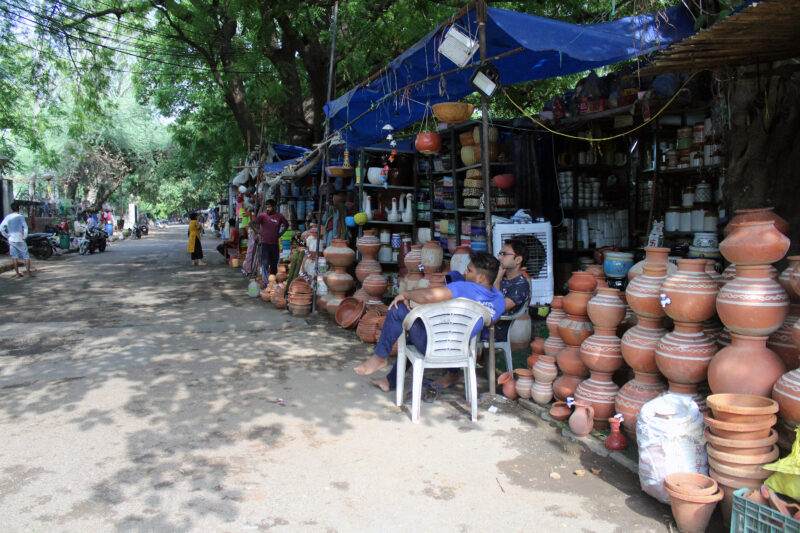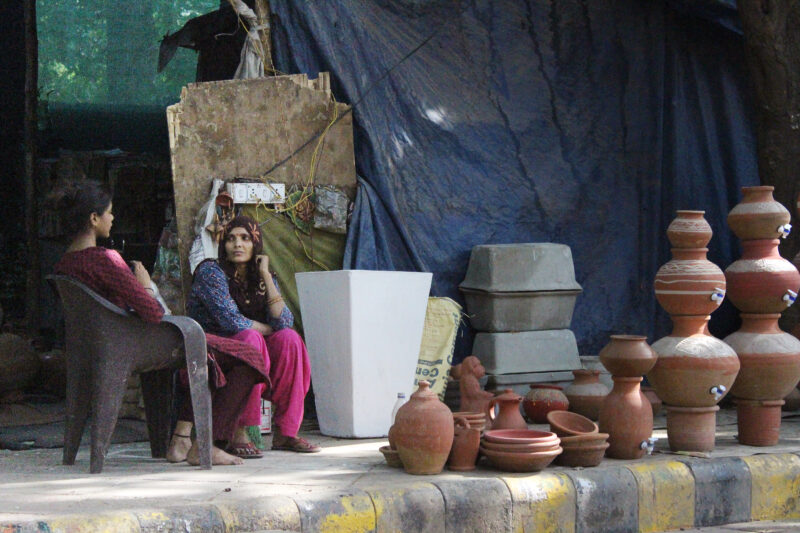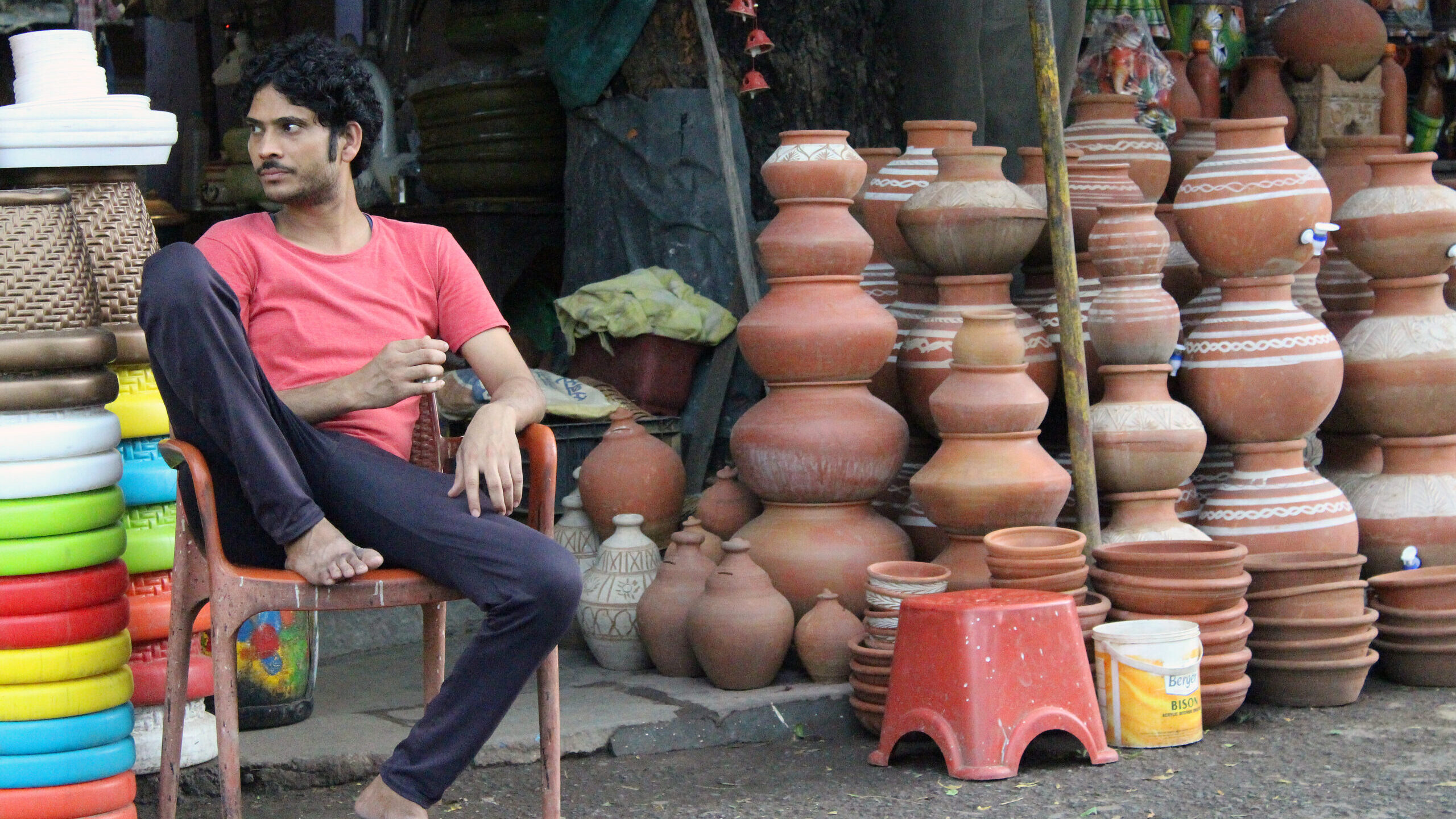“Earthen pots, clay pots or matkas, are supposed to be the natural and cheapest solution to store cold water in the house. Not only are they easy on the pocket, but they also have multiple scientifically-proven benefits”, says Nisha Singh, an ecologist.
“Because these pots are made of clay, which is alkaline in nature, drinking water from these pots helps in relieving any gastric issues we might face”, says environmentalist Meetu Chopra. She continues, “People eat more fast food and junk food these days, which can lead to acidity. Many people, who don’t have good eating habits, will experience acid reflux if they don’t eat food for a long time or skip a meal. The alkaline properties of clay will help keep the pH balance in our body and keep any gastric issues at bay. Hence, drinking water from clay pots is always advisable”, she elaborates.
Chopra adds that clay is composed of minerals like silica, aluminium, magnesium (iron is a substitute for the two), sodium, potassium and calcium. These minerals are infused in the water that is stored in clay pots, thus giving us benefits like improved digestion and high metabolism.
“The cool water also prevents sunstroke, while being gentle on the throat. Some people find the water from the fridge too cold, while others find water stored at room temperature lukewarm. But water in the clay pot is always at the right temperature. Additionally, the clay pots do not burn a hole in the pocket as they are quite cheap, sturdy and a long-term solution for storing cold water. They don’t require any electricity to function, thus making for a better green solution”, she says.
Yet, Delhiites have overlooked earthen pots while tackling the brutal heat during one of the national capital’s hottest summers.
Delhi recorded an average maximum temperature of 40.2 degrees Celsius in April 2022 — the second hottest summer in 72 years. An earthen pot vendor, Manoj, says, “The heatwaves added to the climate woes. There was an hours-long blackout across the capital, meaning no fridge or AC worked to save the people from this heat. Yet, not many purchased the matkas from us.”
The sale price of these pots starts from Rs 400, and they are available in various designs and shapes. Manoj says, “Earlier, people used a small plate or dish to cover the mouth of the pot. But now we also sell the earthen lids. There are also pots that have a tap attached at the bottom for those who do not want to put their hands in the pot. Sab tareeke ka mil jayega (You will get all kinds of pots). But not many are buying”.

When asked about the number of pots he has sold since March this year, Manoj answers, “My brother sits on the main road in Rajouri Garden. Together, we both have sold some 150 pots this year, which is about Rs 20,000 each month for a family of six. Most of our sales happen in the summer, and the income generated during these months is supposed to last during the winters too. Earlier, we would together sell at least 350 pots or so every summer, but times have changed. For the worse.”
Earthen pots have been used for a long time and are reliable vessels for storing and cooling drinking water. Describing their utility, Manoj says that the pots have tiny pores on their surface through which heat is released. “Clay is basically mud, and when you make something from mud, there are minuscule holes or pores on the surface. The water inside the pot seeps onto the external surface and uses the heat inside the pot for the vaporization process. Thus, water inside the pot keeps releasing heat. The water temperature eventually lowers and keeps the water cooler for a longer time”, he explains.
The process of making an earthen pot takes 8-10 days. Clay is of the primary components of soil. Using the right amount of water, the clay is kneaded in a softball, placed on the potter’s wheel and shaped into a pot.
Vicky, another vendor of earthen pots, says, “My grandfather used to make the pots on the old wheel where you had to use your legs to rotate the wheel. It used to take a lot of effort and hard work. Today, we have these automatic wheels which make the task much easier. But both processes require equal patience and dedication.”
Besides using hands to shape the pot, different tools are also used to mould the pots in a certain shape. “Traditionally, the pots are supposed to be round in shape. But for the last few years, we have also started selling pots that are kind of oval in shape — broad at the center, and narrower towards the top and bottom”, says Vicky.
Once the pots are shaped, they are kept in the sun to dry. This takes 1-3 days depending on the day temperature. Finally, the pots are placed in a kiln where they are baked for 7-8 days, stripping them of any moisture and giving them a smooth texture.
Explaining the process, potter Mushtaque Ali says, “There are modern kilns available now, but traditionally, and in major parts of the country still, handmade kilns are used. Here, more than 50 pots are placed together under a shield of broken pieces of clay pots, which are further covered by a layer of hay. The hay is lit on fire, thus making a traditional kiln which bakes the earthen pots inside.”

Kushal, 37, who sells earthen pots at the Vinobapuri Metro station crossroad, says that people have forgotten ‘age-old’ traditions, which is why they are being overshadowed by expensive modern technology. He says that making these pots is a huge task that is carried out with utmost dedication and uniformity.
While Kushal buys the pots from a potter in Bindapur, his wife Pritu and mother Kirandevi add an artistic touch to the glazed pots. They use white paint to make intricate designs – an attempt to make the pots more traditional, as Kushal says.
“This has been an old tradition in our extended family, if not the community. The men make the pots, the women add a touch of tradition and homeliness in the pots”, he says.
Pritu, who dropped out of school after Class 4 and married Kushal when she was 19, learned to make designs on the clay pots from her mother-in-law. “I was never an artistic person. But after marriage, this has become a part of my life. Along with the daily chores, painting the clay pots is also one of my major duties as a member of my in-laws’ family. The work is monotonous, but the pots look very beautiful with designs on them. My mother-in-law only used white colour, but I use vibrant colours like yellow, orange and green to make the pots more attractive”, Pritu says.
Kushal says, “We sit in the hot sun hoping that more people will see the earthen pots and buy them. But people nowadays think that only fridges and ACs can give a respite from this blazing sun. They need to be educated about the benefits of these pots.”
For more stories that cover the ongoings of Delhi NCR, follow us on:
Instagram: https://www.instagram.com/thepatriot_in/
Twitter: https://twitter.com/Patriot_Delhi
Facebook: https://www.facebook.com/Thepatriotnewsindia





